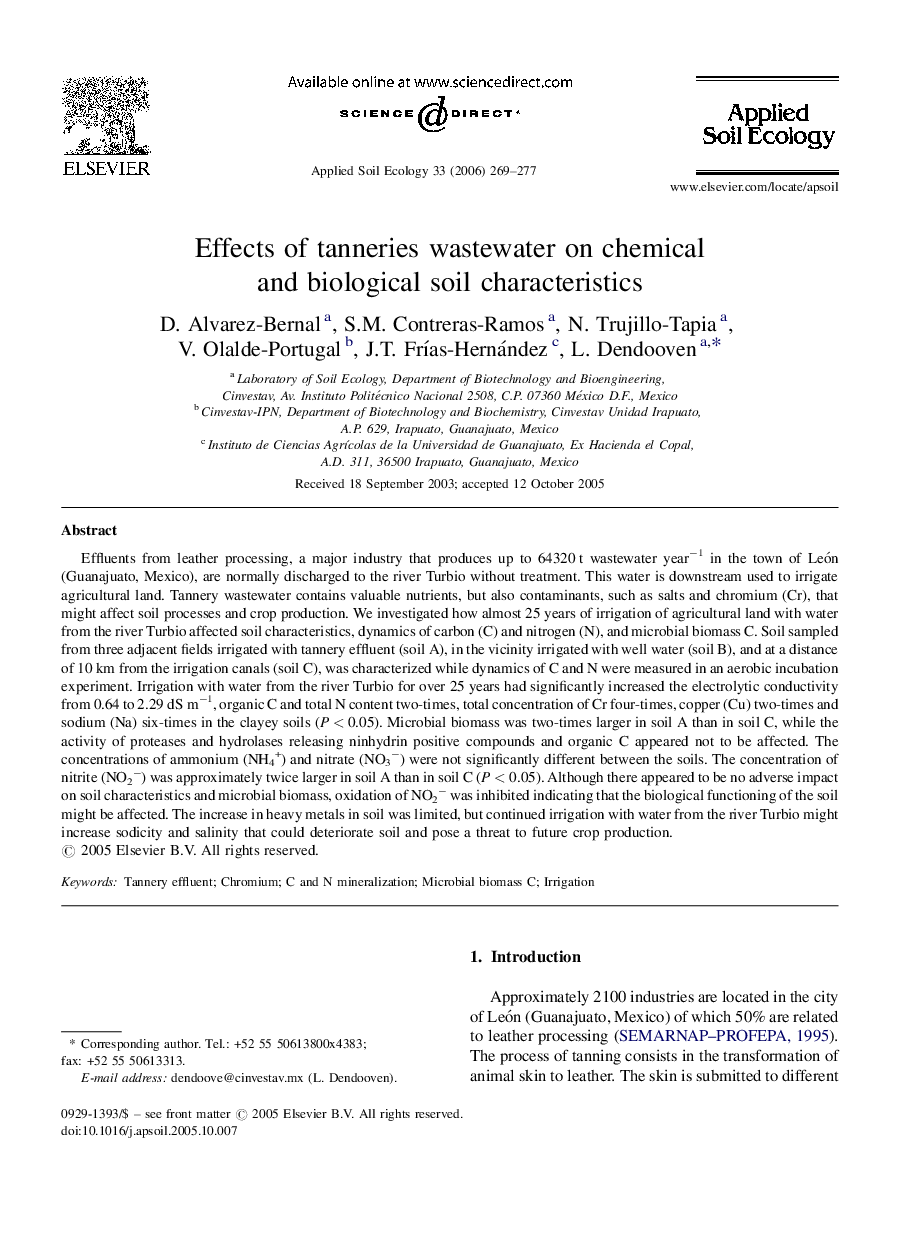| کد مقاله | کد نشریه | سال انتشار | مقاله انگلیسی | نسخه تمام متن |
|---|---|---|---|---|
| 4383549 | 1304273 | 2006 | 9 صفحه PDF | دانلود رایگان |

Effluents from leather processing, a major industry that produces up to 64320 t wastewater year−1 in the town of León (Guanajuato, Mexico), are normally discharged to the river Turbio without treatment. This water is downstream used to irrigate agricultural land. Tannery wastewater contains valuable nutrients, but also contaminants, such as salts and chromium (Cr), that might affect soil processes and crop production. We investigated how almost 25 years of irrigation of agricultural land with water from the river Turbio affected soil characteristics, dynamics of carbon (C) and nitrogen (N), and microbial biomass C. Soil sampled from three adjacent fields irrigated with tannery effluent (soil A), in the vicinity irrigated with well water (soil B), and at a distance of 10 km from the irrigation canals (soil C), was characterized while dynamics of C and N were measured in an aerobic incubation experiment. Irrigation with water from the river Turbio for over 25 years had significantly increased the electrolytic conductivity from 0.64 to 2.29 dS m−1, organic C and total N content two-times, total concentration of Cr four-times, copper (Cu) two-times and sodium (Na) six-times in the clayey soils (P < 0.05). Microbial biomass was two-times larger in soil A than in soil C, while the activity of proteases and hydrolases releasing ninhydrin positive compounds and organic C appeared not to be affected. The concentrations of ammonium (NH4+) and nitrate (NO3−) were not significantly different between the soils. The concentration of nitrite (NO2−) was approximately twice larger in soil A than in soil C (P < 0.05). Although there appeared to be no adverse impact on soil characteristics and microbial biomass, oxidation of NO2− was inhibited indicating that the biological functioning of the soil might be affected. The increase in heavy metals in soil was limited, but continued irrigation with water from the river Turbio might increase sodicity and salinity that could deteriorate soil and pose a threat to future crop production.
Journal: Applied Soil Ecology - Volume 33, Issue 3, October 2006, Pages 269–277